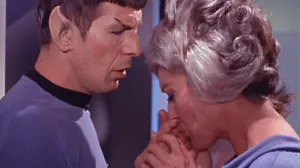When horror directors can’t rely on multiple locations to maintain audience interest, they must dig deeper into human psychology to create effective scares. A single setting forces characters to confront their fears without the possibility of escape, transforming familiar spaces into psychological battlegrounds where every corner holds potential danger. It’s no wonder single-setting horror movies are among the scariest stories ever; the best ones understand this fundamental truth: true terror doesn’t come from where you are but from the realization you can’t leave. In doing so, these movies create an almost unbearable sense of confinement that makes viewers feel as trapped as the characters.
Videos by ComicBook.com
Here is our list of the best single-setting horror movies:
7. The Autopsy of Jane Doe (2016)
Night falls on a family-owned morgue where father and son coroners Tommy (Brian Cox) and Austin Tilden (Emile Hirsch) conduct what should be a routine autopsy. Their subject: an unidentified woman discovered at a brutal crime scene. However, each incision reveals another impossible secret: internal trauma with no external signs, strange objects buried in organs, inexplicable compounds in tissue samples. As scientific certainty crumbles, André Øvredal’s methodical direction makes the morgue increasingly hostile.
The Autopsy of Jane Doe slowly traps Cox and Hirsch in an unescapable nightmare as the truth about the mysterious woman is revealed. Add to that some of the most gruesome practical effects in cinema history, and you have a hit capable of making even the most callous horror fans flinch in terror.
6. Hush (2016)
When a masked killer targets deaf writer Maddie Young (Kate Siegel), her isolated forest home becomes a battlefield where sound itself is weaponized. What seems like an insurmountable disadvantage – Maddie’s inability to hear her stalker – forces her to develop new strategies for survival. Mike Flanagan subverts home invasion tropes by making Maddie’s disability central to her defense. Her keen visual awareness and intimate knowledge of her surroundings prove crucial as she turns everyday items into survival tools.
In Hush, Siegel crafts a hero who communicates volumes without words, while John Gallagher Jr.’s masked intruder exudes mundane menace. Their lethal game of cat and mouse demonstrates how familiarity with space can level the playing field between predator and prey, especially when traditional advantages like hearing no longer apply. Because of that, this movie showcases Flanagan’s brilliance and manages to breathe some new life into the tired home invasion subgenre.
5. 10 Cloverfield Lane (2016)
When 10 Cloverfield Lane begins, Howard Stambler (John Goodman) claims he rescued Michelle (Mary Elizabeth Winstead) from an apocalyptic disaster, bringing her to safety inside his doomsday bunker. Yet, the chains binding her suggest otherwise. Inside these concrete walls, Michelle will try to find the truth about humanity’s supposed extinction or the ravings of a madman. Goodman inhabits Howard with unnerving precision, crafting a character whose every action supports both interpretations. Meanwhile, Winstead brings sharp intelligence to Michelle’s predicament as she searches for truth in the details: a magazine’s date, the peculiar placement of furniture, and the subtle inconsistencies in Howard’s behavior.
Dan Trachtenberg’s direction amplifies the movie’s claustrophobic paranoia, underlining the physical constraints of his single-set horror movie with each scene. Because of that, 10 Cloverfield Lane remains a nerve-wracking experience that proves you only need a handful of good actors and a strong core concept to craft a masterpiece.
[RELATED: Before Wolf Man, These Are the 7 Best Werewolf Movies]
4. Green Room (2015)
After being hired to play in a neo-Nazi club and deciding to sing a song against white supremacists, a punk rock band finds themselves trapped in the titular backstage green room in this brilliant horror-thriller. The band soon learns their moment of bravery has dire consequences, as the men waiting for them to come out of a room with a single entrance are out for blood. Leading this force of white supremacists stands Darcy (Patrick Stewart), whose calm demeanor makes his brutality all the more chilling.
Leading the protagonists is Pat (Anton Yelchin), who urges his friends to reinvent themselves as survivalists, turning amplifiers into barricades and microphone stands into weapons. Jeremy Saulnier’s direction emphasizes this claustrophobia, making each attempted breach of their makeshift fortress feel inevitable. Plus, the authenticity of Yelchin’s performance anchors the escalating violence in terrible reality.
3. Cube (1997)
Six identical walls, six possible exits, and endless mathematical puzzles separate life from death in the appropriately named Cube. In the movie, strangers awaken in a geometric prison with no memory of their arrival. Still, they quickly learn that each cubic chamber of a never-ending maze could house lethal traps. To survive, the group must overcome their differences and learn how to identify the patterns that could guide them to safety. Otherwise, they are doomed to perish.
Filmmaker Vincenzo Natali’s stark vision strips away conventional horror elements, leaving only cold angles and deadly precision. The set’s brutalist design, where every room is a replica of the last, creates horror through repetition. This minimalist nightmare serves as an anxiety-inducing metaphor for bureaucratic systems that trap ordinary people in their machinery. The cube’s apparent order, with its perfectly measured spaces and predictable traps, suggests purpose without meaning. It’s no wonder Cube remains a cult classic, ever relevant over two decades after its initial release.
2. Alien (1979)
As one of history’s most influential sci-fi flicks, Alien doesn’t need introductions. Still, it’s interesting to see how the movie builds tension by trapping its cast in a single set while a beast hunts them down one by one. Through dark maintenance tunnels and cramped corridors, Warrant Officer Ripley (Sigourney Weaver) and her crew discover that their ship’s industrial architecture serves the alien’s hunting instincts all too well. Steam vents provide cover, ceiling ducts offer hunting paths, and every shadow could hide gleaming teeth.
In Ridley Scott’s classic, the ship itself becomes an enemy as Ripley races through its industrial maze, desperately looking for a way out. Each attempt at escape forces her deeper into the Nostromo’s bowels, where the distinction between mechanical and organic horror blurs. In addition, H.R. Giger’s biomechanical creature design finds its perfect complement in the ship’s clinical-industrial spaces, suggesting humanity has built the ideal habitat for its own destruction. It’s surprising that the franchise took so long to properly recreate this claustrophobic feel.
1. The Thing (1982)
In John Carperter’s The Thing, R.J. MacReady (Kurt Russell) and his fellow researchers face an entity that absorbs, replicates, and replaces its victims. Because of that, their scientific station, built for collaboration and discovery, twists into a maze of suspicion where every interaction could mean infection. To make matters worse, Antarctica’s endless white creates a prison around U.S. Outpost 31, where paranoia proves as deadly as any alien.
Rob Bottin’s groundbreaking practical effects literalize this inner horror as human forms split, stretch, and recombine. However, the true terror lies in the quiet moments between mutations, when Palmer (David Clennon), Childs (Keith David), and the others must decide who to trust while knowing they might unknowingly be the enemy. Their isolation, enforced by howling Antarctic winds, ensures that survivors and monsters remain trapped together until nothing human remains. If The Thing remains a celebrated cinema achievement, that’s due to Carpenter’s ability to extract every ounce of paranoia from a single set.
All of these films are available on various streaming platforms.








